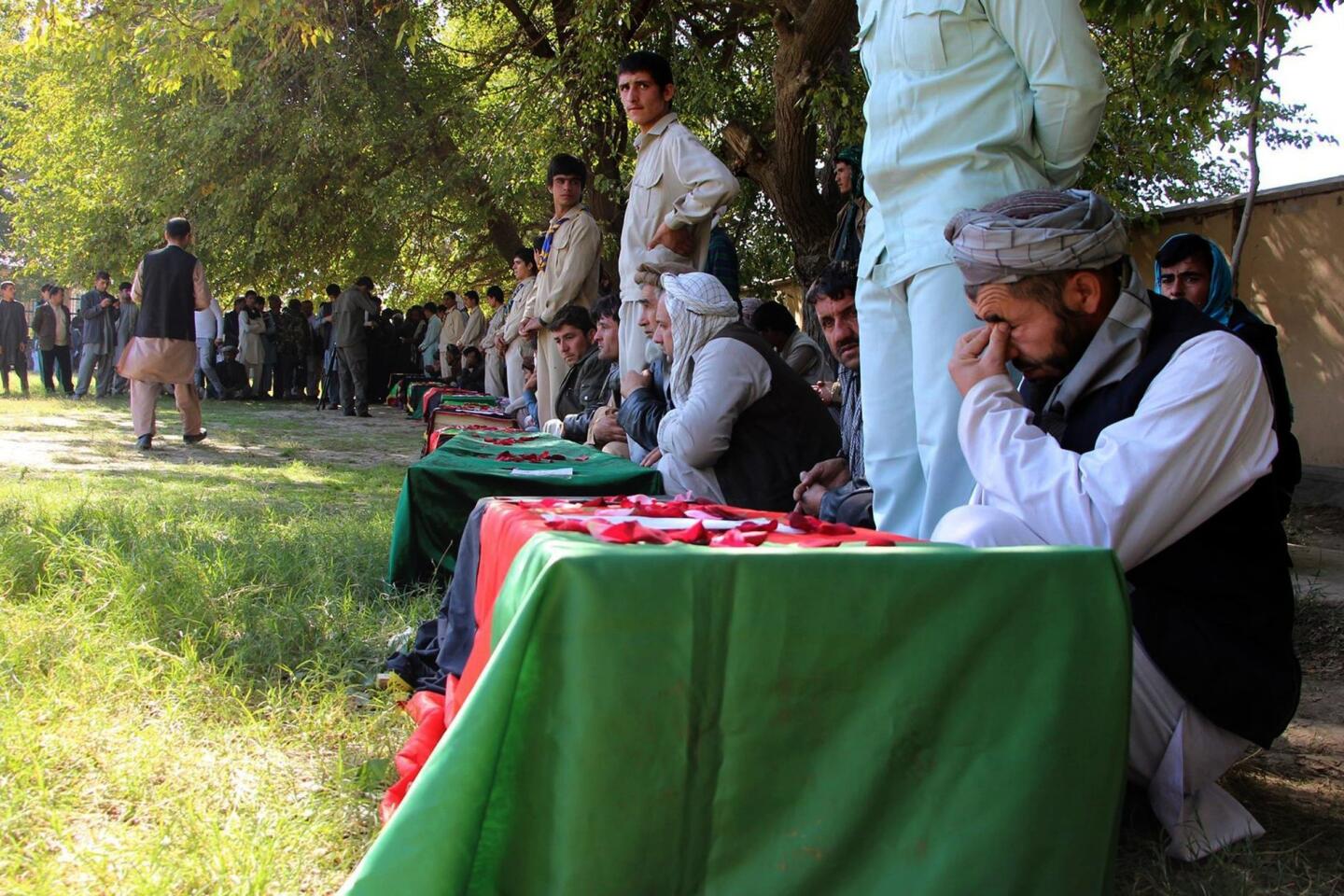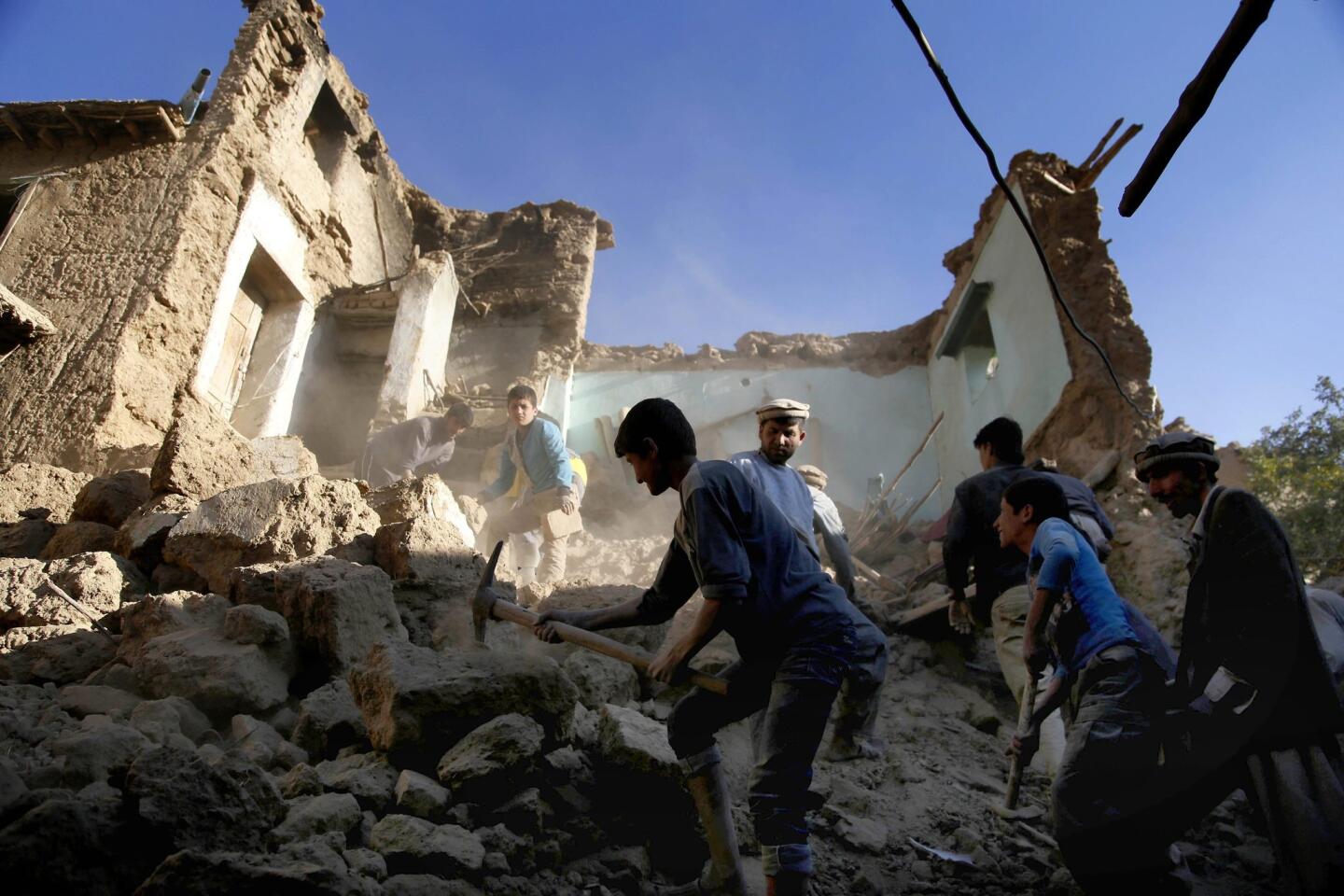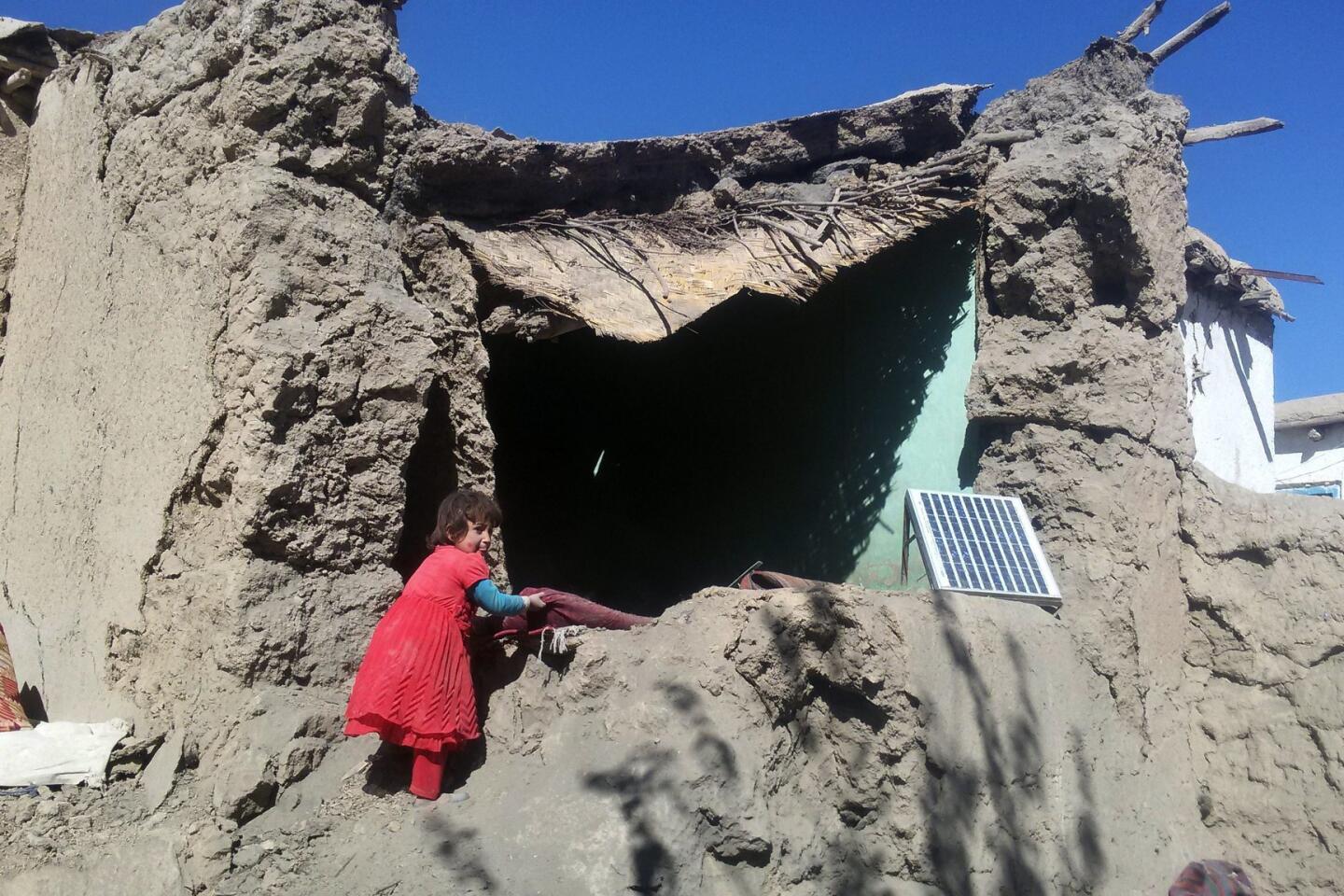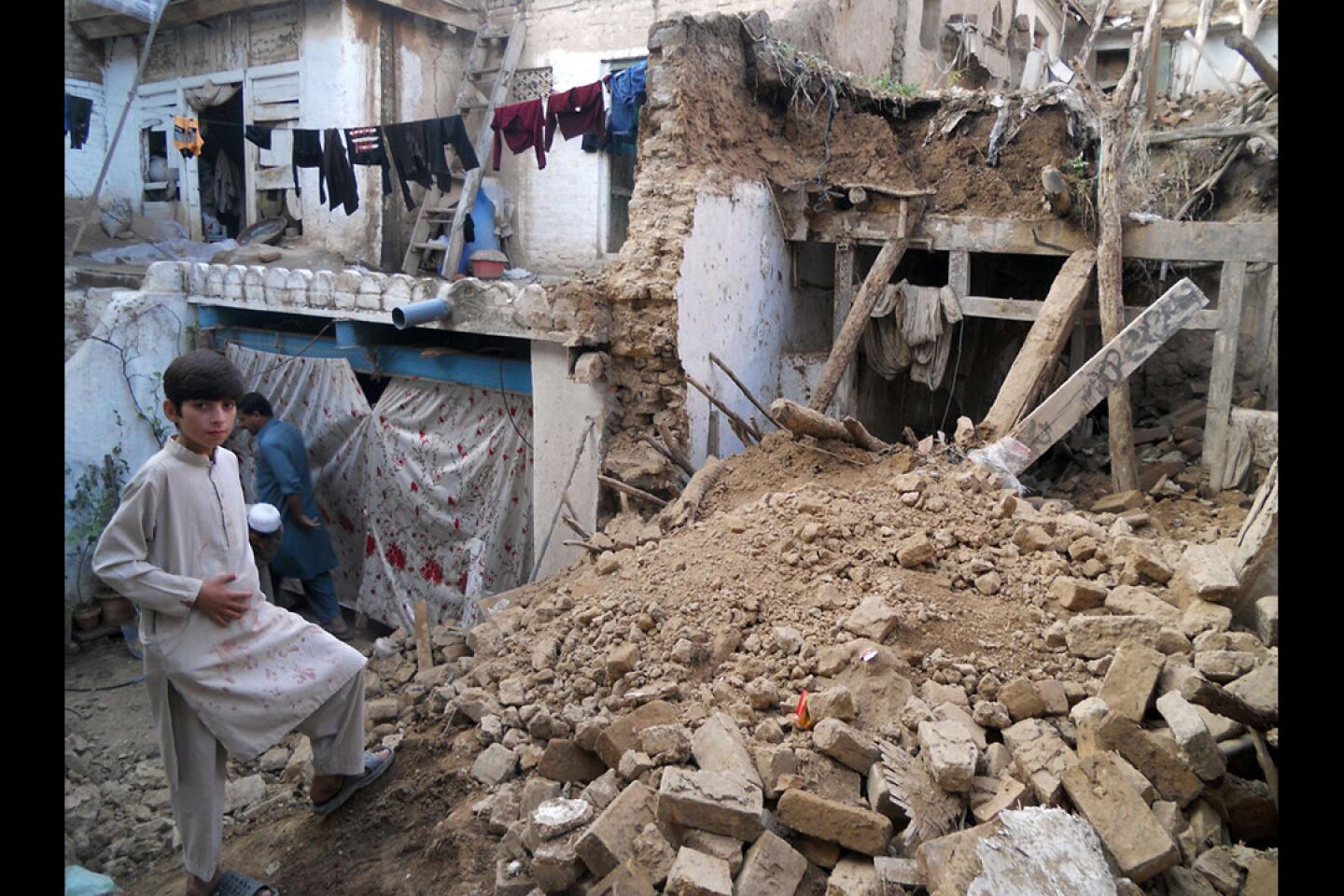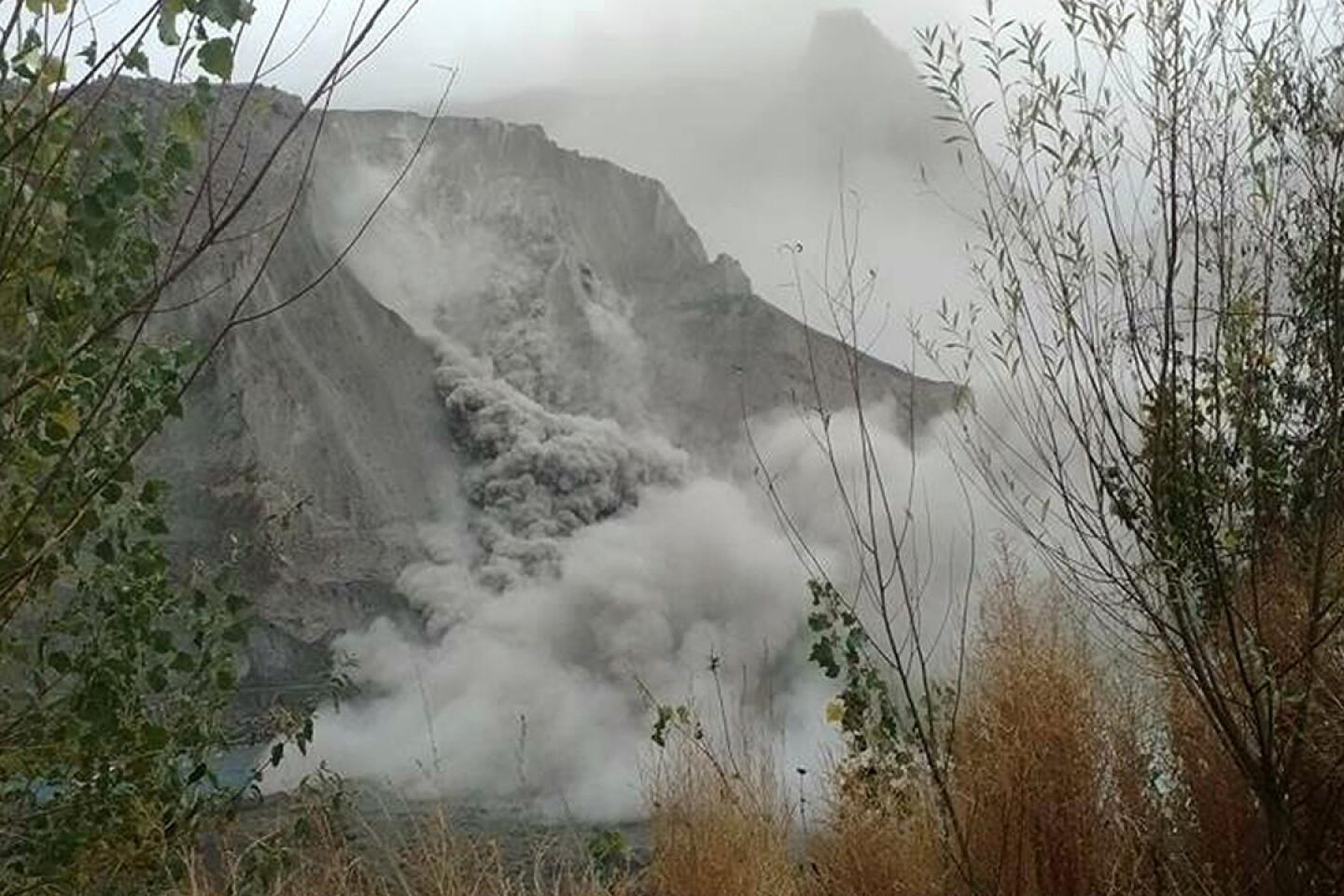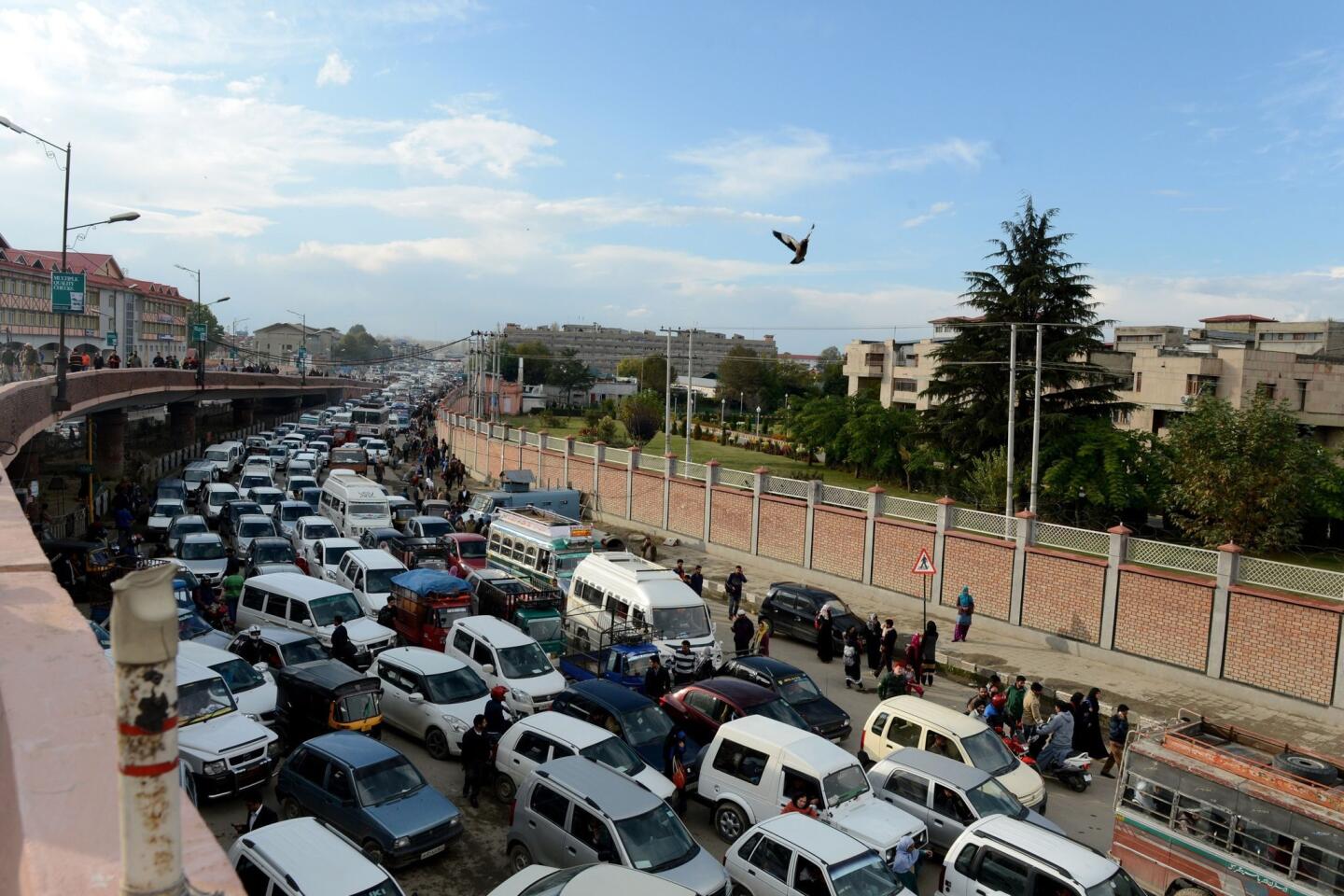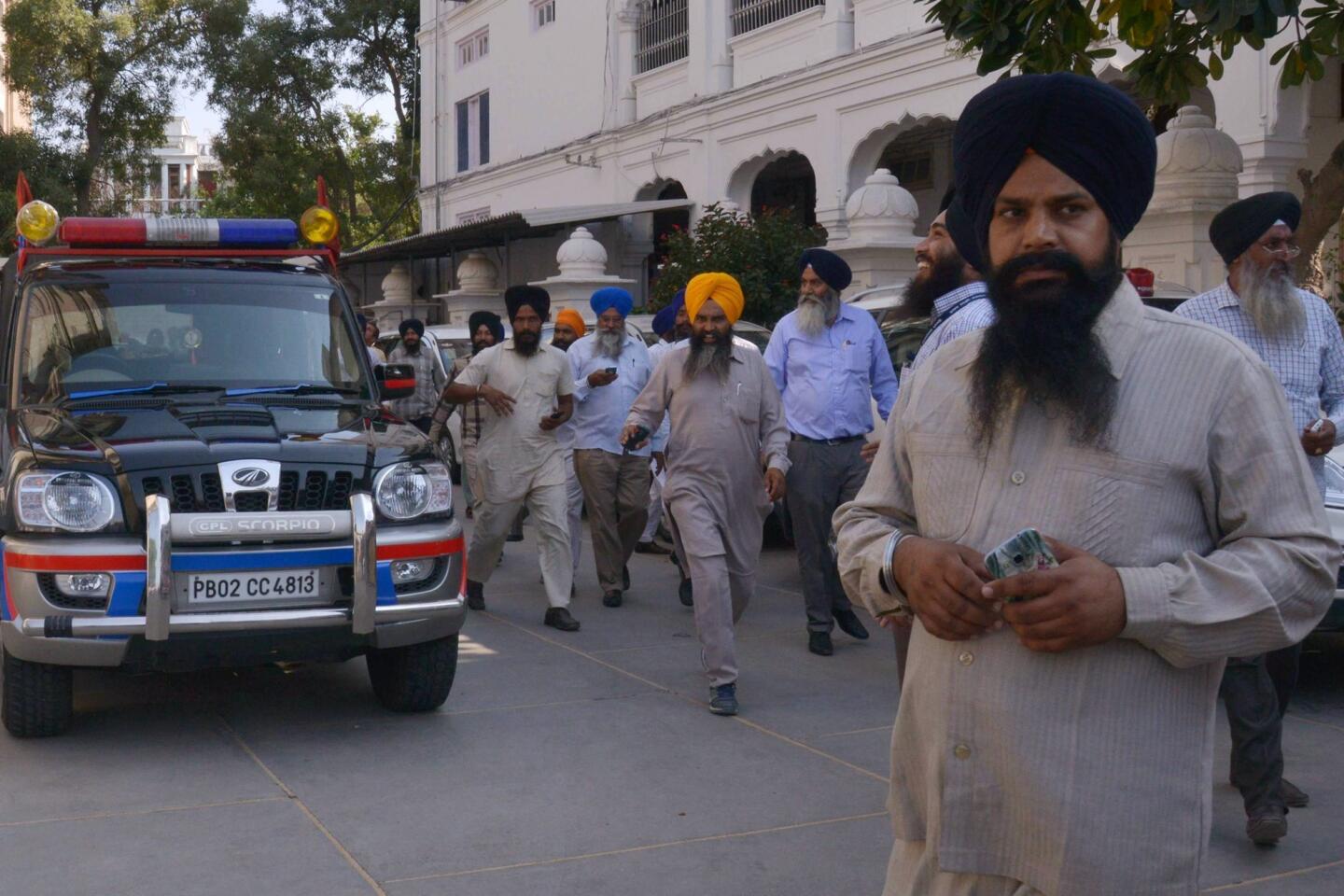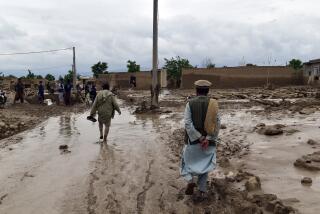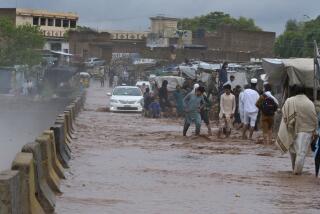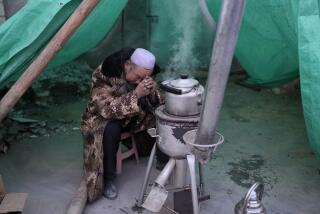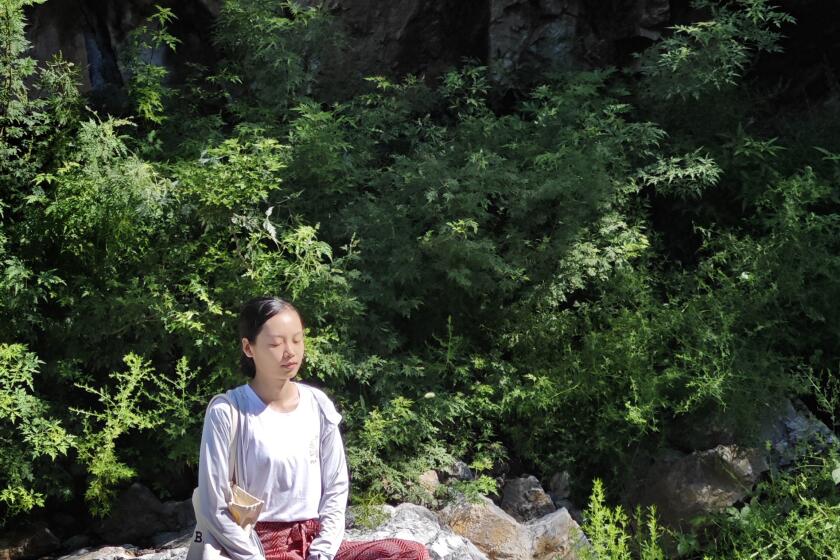Afghanistan and Pakistan race to rescue earthquake victims; more than 240 killed
Reporting from Kabul, Afghanistan — Army units and rescue teams dug through collapsed hillsides across northern Pakistan and Afghanistan on Tuesday in a desperate search for survivors after a powerful temblor in the Hindu Kush mountains that left more than 240 people dead.
Monday’s magnitude 7.5 earthquake was centered 158 miles northeast of Kabul, near Jurm district in the remote province of Badakhshan, officials said. It is one of Afghanistan’s most inaccessible regions, where a massive landslide in May 2014 killed hundreds.
At least 80 people were killed in Afghanistan, said Wais Ahmad Barmak, Afghan state minister for disaster management affairs, including 30 in the eastern province of Kunar and 12 in Badakhshan. The death toll was seen as likely to rise because rescue teams had not yet reached districts closest to the epicenter, including some that are controlled by Taliban insurgents.
In the northern Afghan province of Takhar, west of Badakhshan, 12 students at a girls’ school were killed trying to escape their school building when the quake struck, officials said. More than 40 girls were taken to a hospital in the provincial capital, Taloqan, the Associated Press reported, citing a spokesman for the provincial governor.
At least 15 people were killed and about 100 injured in the eastern province of Nangarhar, along the Pakistani border, according to the provincial natural disaster directorate. At least 30 houses in the provincial capital, Jalalabad, were destroyed.
“Today’s earthquake was the strongest one felt in the recent decades,” Afghan Chief Executive Abdullah Abdullah tweeted.
In Pakistan, army officials said 161 people were killed in Khyber Pakhtunkhwa province and more than 1,000 injured. Landslides blocked the high-altitude Karakoram Highway, which connects China and Pakistan, in several places, and military teams were busy trying to open the road, said Maj. Gen. Asim Bajwa, the Pakistani army spokesman.
Pakistani quick-reaction units had reached some of the hardest-hit districts in the province and begun rescue operations, Bajwa said. The chief of army staff, Gen. Raheel Sharif, ordered “all resources” to be sent to the affected areas.
“We are still receiving reports about dead and wounded, and figures will go high,” said Muhammad Latif, spokesman for the disaster management authority in Peshawar, the provincial capital. He said that rescue work was in progress and that tents and food items were being dispatched from Peshawar to far-flung areas.
The afternoon quake sent students and workers rushing out of swaying buildings and evoked memories of major temblors in the region, including one in northern Pakistan in 2005, which killed tens of thousands, and one in Nepal last year, in which more than 8,000 died.
The toll of the previous quakes was exacerbated by a lack of adequate emergency response teams and equipment in some of the most forbidding territory in South Asia. But experts hoped that because Monday’s quake struck at a relatively significant depth — 130 miles below, according to the U.S. Geological Survey — damage at the surface would not be as severe as in the 2005 temblor, for example, which struck at a depth of 16 miles.
About 40 minutes after the earthquake, a magnitude 4.8 aftershock was reported in the vicinity.
A spokesman for the government in Khyber Pakhtunkhwa, Mushtaq Ghani, said that hundreds of people had lost their homes and that authorities were racing to mount rescue-and-relief operations in the worst-hit districts.
“The provincial disaster management authority has yet to receive detailed reports about damage, and it will take time,” Ghani said. He said the number of affected people could be in the thousands.
Chitral, a scenic district in the foothills of the Hindu Kush mountains about 250 miles north of Peshawar, was one of the hardest-hit areas in the province, officials said. A police official said that 20 bodies had been brought to the district headquarters hospital and that 82 people had suffered injuries.
The official, who was not authorized to comment publicly, said the earthquake also caused landslides, blocking roads in the mountainous district. Telecommunications systems were also disrupted, and huge cracks appeared in the sides of buildings.
Officials in Punjab province said four people there were killed and 61 injured. Deeba Shahnaz, a rescue official, said the “overwhelming majority” of casualties were linked to building and wall collapses.
Pakistani Prime Minister Nawaz Sharif set up a crisis management cell in Islamabad, the capital, while the army chief flew to Peshawar to head the relief operation.
In Afghanistan, Abdullah called an emergency meeting of the national disaster relief agency and directed aid agencies to send help to the affected areas.
There were reports of damage to buildings near the Afghan presidential palace. Shopkeepers and residents raced into the streets as the temblor struck.
“I’ve lived 57 years and have never seen an earthquake like this,” said a carpenter in Kabul named Farid. “I couldn’t believe how strong it was. Luckily nothing in our shop was broken, but I had to run outside with everyone else.”
In the Indian capital, New Delhi, office workers streamed out of buildings and residents reported minor structural damage to multistory apartment buildings.
Indian Prime Minister Narendra Modi said he had requested “an urgent assessment” of the situation.
“We stand ready for assistance where required, including Afghanistan and Pakistan,” Modi tweeted.
Times staff writer Bengali reported from Mumbai, India, and special correspondents Ali and Latifi reported from Peshawar and Kabul, respectively.
ALSO:
5 Britons killed when whale-watching boat with 27 aboard sinks off Canada’s Vancouver Island
Facebook CEO Mark Zuckerberg is at it again, speaking Chinese
How a Bollywood movie helped bring a disabled Indian woman home from Pakistan
More to Read
Sign up for Essential California
The most important California stories and recommendations in your inbox every morning.
You may occasionally receive promotional content from the Los Angeles Times.
